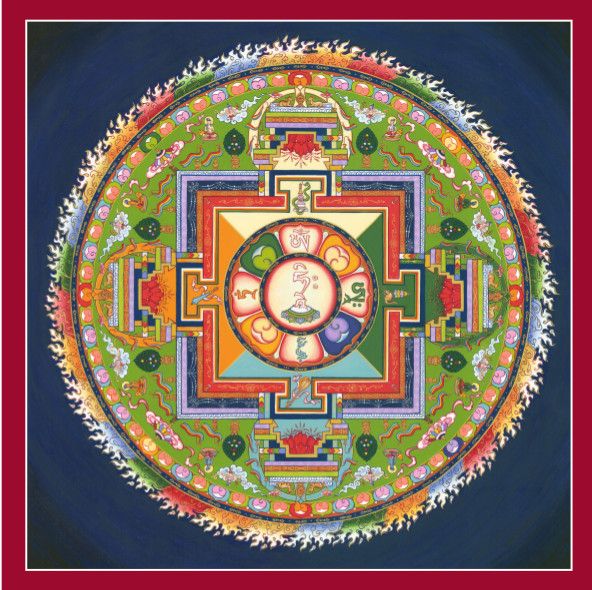Tibetan Buddhist Art
Postcard Mandala Avalokiteshvara
Postcard Mandala Avalokiteshvara
Low stock: 4 left
Couldn't load pickup availability
Postcard "Mandala Avalokiteshvara" of Tibetan Buddhist Art. Avalokiteshvara is Bodhisattva of Compassion (Tib.: Chenrezig). On the back is the following English text:
The Tibetan word for mandala, dkyil-khor, literally means 'that which encircles a center'. A mandala is the celestial residence of a meditational deity. The structure of the palace models that of ancient Indian palaces.
Avalokiteshvara (Tib.: Chenrezig) is the Buddhist deity who personifies the virtue of compassion. Chenrezig is represented with either 4 or 1000 arms, to symbolize his vast ability to help alleviate the suffering of beings. Although depicted on a flat surface, the mandala is actually three-dimensional. The purpose of the mandala is to serve as a tool on our spiritual journey. It's like a road map that leads the practitioner to enlightenment.
Each aspect of the constructed mandala has deep meaning. The doorways on all four directions represent the Four Immeasurable Thoughts: love, compassion, joy and equality. The thousand-armed Avalokiteshvara is represented in the center of the mandala by the seed syllable Hri. This syllable is the sound emanation of Avalokiteshvara. To protect the mandala from negative energies and conditions, it is surrounded by a vajra fence and the fire wall.
The dimensions of this card with envelope are:
Small (A6): 14.8 cm x 10.6 cm x 0.1 cm
Large (A5): 21 cm x 14.8 cm x 0.1 cm
Square: 14.5 cm x 14.5 cm x 0.1 cm
This card is a publication of Tibetan Buddhist Art - Copyright: © Carmen Mensink .
SKU:TBA1011-S
Dimensions
Dimensions
See text
Weight
Weight
20 g
Country of origin
Country of origin
- The Netherlands
Safety information
Safety information
The General Product Safety Regulation protects you as customer. Read more about the GPSR. Responsible market participant for the EU of this product is:
Tibetan Buddhist Art
www.tibetan-buddhist-art.com
Share



